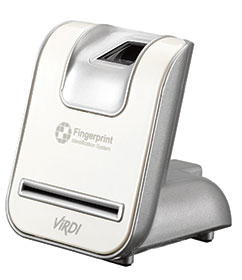

In recent years there has been a significant growth in the use of biometric technologies for various applications in South Africa. Biometrics is used not only for physical access control, but also for information management, access to information control, time and attendance (T&A) and point of sale (POS) systems.
Biometrics is not a sudden phenomenon. In its basest form it has been around since the late 1970s, when the first hand scanners were introduced to replace manual card clocking systems.
The adoption of biometrics into mainstream use has been a long and slow road and this could be explained by the slow development of biometric devices and the algorithms that form the heart of any biometric system. The cost factor also played a major role, as the earliest biometric systems were extremely costly and companies baulked at the prospect of laying out Capex to invest in this new and unproven technology.
Since the mid-1990s however, biometrics has gathered momentum. This is partly due to developments in technology as well as manufacturers seeing the advantages of investing in research and development, even if the commercial market did not hold the same view. Governments were the first major adopters of biometrics, specifically for use in immigration and passport control as well as in law enforcement and military applications.

Long road to acceptance
In South Africa, the introduction of new technology and devices was largely met with scepticism. System integrators, installers and end-users tend to install systems that they know and with which they are comfortable. IP-based technologies, particularly biometrics, are an example of those technologies that the market is slow to accept.
Recently, however, we have seen a spike in demand in the use of biometrics in the commercial space. The T&A market largely drove this as fraud and corruption reared its head within HR departments. This was evident with the very real and costly reality of buddy clocking when conventional card-based systems are used. With biometrics, however, it is impossible to give your friend your finger to clock into work on your behalf. Other factors such as lost, stolen or forgotten cards, extra functionality within the devices and integrated solutions also played a major part in the increased demand for biometrics.
In the security sector, the need for more secure devices became apparent for the same reasons. As access cards can be passed between people, there is no control regarding who gains access. A very cumbersome management process had to be designed, implemented, followed and audited to prevent people gaining access to the premises or restricted areas. Biometrics proved to be the solution for the same reason that T&A migrated. No more lost cards, no more passing of cards between people. This provides two reasons to deploy biometric-based systems: convenience and security.
The South African market has since adopted biometrics technology with startling speed and almost every T&A system, access control system or information control system uses biometrics in some way.
Zero cost, maximum value?
There are however a few pitfalls in this sudden surge in biometrics’ popularity. The first is that South Africa has always been a very cost conscious market, but the decision makers still require that the system provides the maximum amount of return.
This opens the door for vendors that manufacture and supply sub-standard devices. Because they are cheap, they are attractive to the end- user. The end-user only finds out later that the system he bought looks good on paper, but operates poorly when mounted on the wall. Spares, repairs, technical back-up service, as well as the security and durability of the system are not top of mind when the end-user purchases the system. This becomes an issue after the installation has been completed and paid for.
The second pitfall is that very few people are educated in how a biometric system operates. They are unaware of the different sub-categories of technology under fingerprint biometrics. They do not know that fingerprint biometrics can be subverted. They also do not know what technology needs to be incorporated into the reader to prevent the possibility of the biometric system being compromised.
The third pitfall is that sales staff do not know the features, functions, benefits and limitations of the system. This leads to end users making incorrect decisions based on what they want from the system and their choice of system. Often one finds that a system was sold to the end user based on his assumption that it can to do ‘X’, when in fact it only manages to do ‘Y’.
The last pitfall is something I have dubbed ‘The Hollywood Effect’. End-users often have expectations from biometrics that are unrealistic. I am often asked whether the fingerprint system can interface with our National Database because they saw it on a popular TV programme.
Biometrics will continue to grow in popularity. However, biometrics’ biggest threat is the biometric industry itself. If sub-standard systems keep on finding their way into the market and new technologies are not introduced, the biometrics market may stagnate.

© Technews Publishing (Pty) Ltd. | All Rights Reserved.